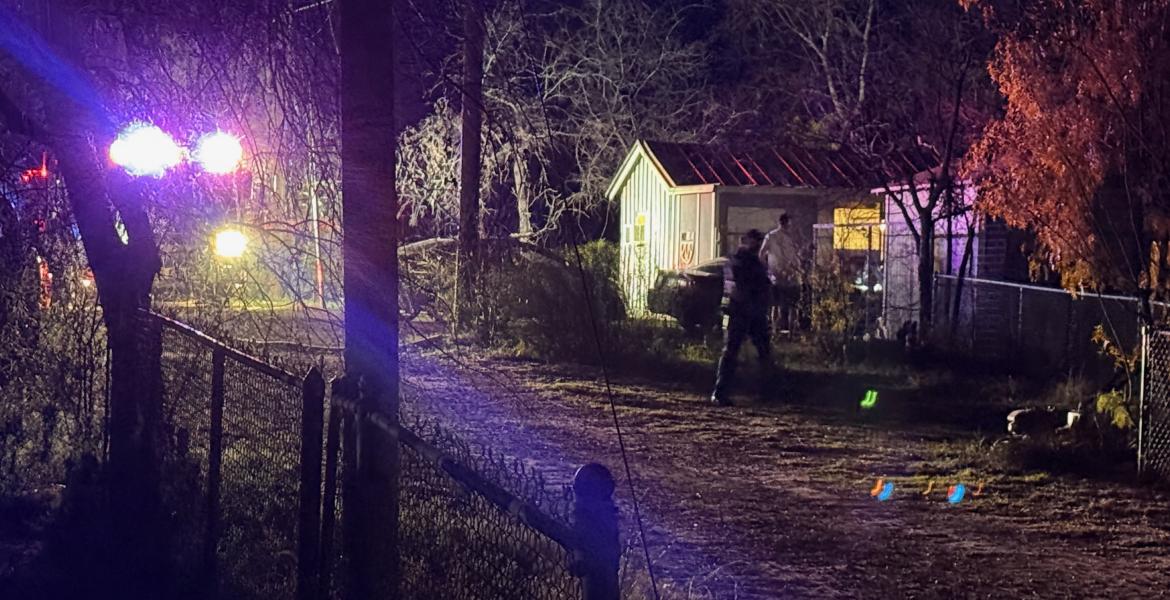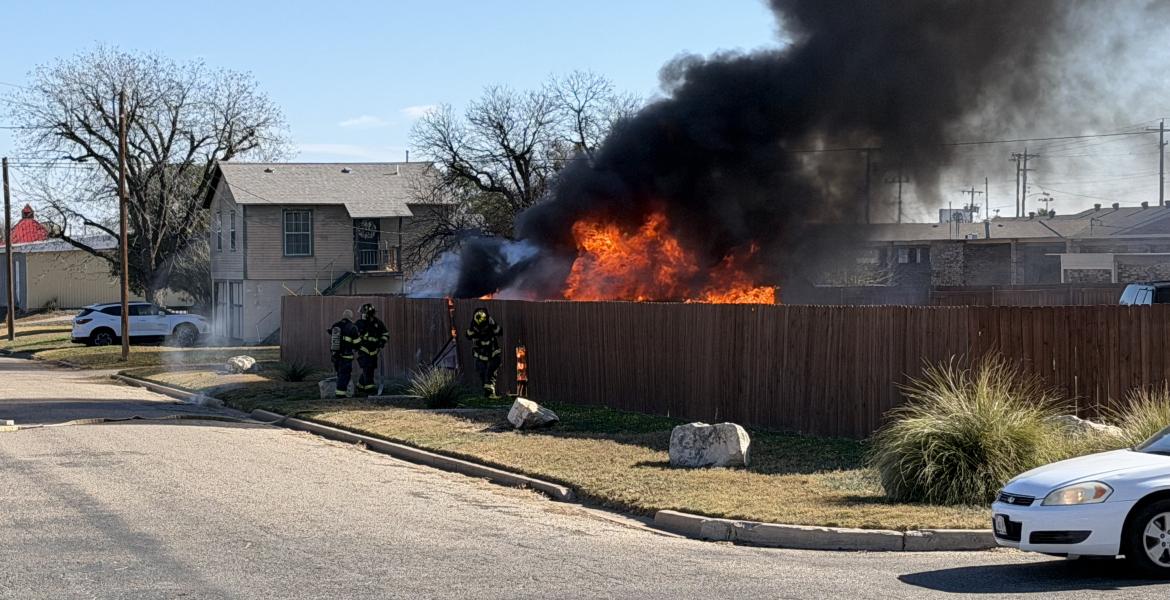Saturday, we met at the Packsaddle Barbeque Restaurant on the road towards San Angelo’s airport, Mathis Field. Ludwig A. Havlak, now 92-years-old, had quite a story to tell.
He was a radar gunner onboard the SB-24 “Snooper,” a variant of the famous mainline B-24 Liberator, in the South Pacific during World War II. In all, Havlak flew 612 combat hours, 472 of which were categorized as “strike time” during 43 missions over a timeframe of approximately nine months, from April 1944 to December 1944.
This was when Admiral Chester Nimitz’s arduous and deadly island-hopping strategy towards the Japanese homeland was in full operation. Havlak survived many of the toughest days of war against the Japanese in the Pacific Campaign.
Most of Havlak’s combat service and all of his strike hours were with the 868th Bombardment Squadron. The 868th BS was a specially designated unit attached to headquarters, Thirteenth Air Force whose purpose was to disrupt Japanese shipping to the islands they occupied throughout the South Pacific. The Japanese military had adjusted their shipping tactics to move clusters of boats and barges from island to island under the cloak of darkness or bad weather to avoid shipping interdiction aircraft strikes via visual bombing by the Americans.
The SB-24, unlike the mainline B-24, was equipped with special radar that occupied the ball turret machine gun position on the belly of the aircraft. The radar gave the SB-24 an all-weather strike capability, able to release bombs on information revealed by radar illumination in lieu of a visual bombsight.
Using that radar to inform crews when to drop their bomb payload, the “Snoopers” as they were called, were able to shutdown Japanese resupply efforts to their forward-deployed island garrisons from Guadalcanal to the Philippines.
Havlak’s job was to operate that radar.
Early Years
Havlak was born in 1921 and grew up on the family farm and ranch near Rowena. He attended St Joseph’s Catholic Academy in Rowena for all grades. The Great Depression was particularly tough on area farmers, and Havlak left school after the 11th grade, never earning his diploma, to work on the family farm. His family farmed primarily cotton.
It was very hard work, Havlak said. “Back then you picked cotton by hand, hauling around those sacks. Today, you’ve got pickers that can strip eight rows… some of them 12 rows,” he said. “I mean back then you worked like a slave. When you plowed those fields, you only took one or two rows at a time.”
Cotton pickers and other modern farm implements did not arrive in Rowena until after WWII.
When the war broke out on Dec. 7, 1941, Havlak figured his draft number would come up soon enough. He was 20-years-old and had registered. But rather than wait to involuntarily serve, he boarded a bus in San Angelo in August 1942 and headed to Lackland Army Airfield in San Antonio to volunteer in order to improve his chances of being able to fly.
He was selected to be an airborne radio operator and attended school at Sioux Falls Army Air Base in South Dakota. After that, the Army sent him to Boca Raton, Florida for radar operator school. Radar was a new invention for aircraft then.
When the training was complete, the Army designated Havlak as a radar gunner, assigned to the B-24 aircraft. His gunner training was to learn how to man the ball turret position in the belly of the B-24 at Harlingen Field in South Texas. High altitude pressure chamber training in Washington, D.C. followed until the Army could certify Havlak as “combat ready.”
His first crew was assigned to him at Langley Army Airfield in Virginia. “We were a high altitude crew,” Havlak said. On the B-24s assigned the high altitude mission, Havlak’s sole purpose was to man the ball turret that extends in flight from the plane’s belly. “You get in it and it cranks down, and you’re just sitting out there right next to the engines. The ‘ack-ack’ is right there next to you,” he said, referring to enemy anti-aircraft artillery. Havlak didn’t particularly appreciate the exposed position.
The Pacific Theater
When Havlak and crew with their brand new B-24 reported for duty in the combat zone at Guadalcanal on an airstrip that Allies had recently captured from the retreating Japanese, they weren’t sent directly into combat.
Instead, their assignment was to fly high altitude training missions, bombing fake targets, with a film crew following them, filming everything they did. The movie being created was for training newbie aircrews stateside, Havlak said. Over the course of his life, he has searched multiple times for a copy of the film made during those first five sorties, but hasn’t been able to locate it.
Crew attrition on the radar-equipped SB-24s flying the dangerous low level missions out of the Admiralty Islands west of there prompted the command to notice that Havlak was a trained radar gunner and a perfect replacement for lost airmen.
Besides that, Havlak said he was getting bored with the high altitude drone and practice sorties with no action. “After six of those missions, they decided that I was a radar and I could go do this other job,” Havlak said.
“No more ball turret,” Havak said, with a sigh of relief.

Instead Havlak operated the 360-degree radar equipment installed where the ball turret gun was. Havlak sat inside the fuselage on top of it, near the waist guns. Manning one of the waist guns was his secondary aircrew position.
Havlak described a typical sortie from his position. He watched the radar during all cruise portions of the mission, informing the pilot about weather ahead, boats in the water, or approaching aircraft. As the bomber approached the Initial Point (IP) for the bomb run, the bombardier took control of the radar to hone his aim.
Havlak moved with his new SB-24 crew to the Admiralty Islands base where he accomplished 38 combat missions, some high level, and many of them low level and almost all of them at night.
“They had us bomb land targets at night to keep the Japanese from sleeping,” Havlak said of his memorable sorties over Japanese positions during the New Guinea campaign.
In August 1944, the 868th participated in the destruction of the Japanese Navy at Truk Lagoon, then turned their efforts toward destroying enemy positions on Soerabaja, Java.
Havlak participated in campaign at the Bismarck Archipelago, the prelude to General Douglas MacArthur's return to liberate the Philippines. And Havlak was there, too.
Havlak remembers the challenging and stormy weather in the South Pacific. “One night we got into this storm and it knocked out the radar,” Havlak said. Saint Elmo’s Fire engulfed the aircrew inside the bomber. They continued the mission. “We missed the target that night,” Havlak said.
The SB-24s flew extremely long missions, some spanning as many as 2,000 miles round trip. On one such mission, Havlak recalls that after they landed the plane had less than 20 minutes of gas left.
Havlak survived 40 combat missions, counting his five training sorties, and was eligible to go home. But he chose to remain and fly three more sorties so that he could finish out the tour with his crew.
The brotherhood of arms is that strong, Havlak admits. But after Havlak and crew returned to the States (on a hospital ship, where Havlak and company were assigned to guard infantrymen suffering what we today call PTSD), they parted ways and never got back in touch.
Havlak’s son-in-law researched on the Internet and found the pilot of his crew in 2002. For Havlak’s 80th birthday, the pilot visited San Angelo and they had a reunion at The Wharf Restaurant.
Havlak earned the Air Medal with three Oak Leaf Clusters, the Philippine Liberation Ribbon with one Bronze Star, the Asiatic Pacific Medal with five Bronze Stars, and for good measure, the Good Conduct Medal.
Today, Havlak is retired to his ranch near Lowake, where he spends three or four days per week tending to a herd of over 200 sheep. He started his civilian career there as a farmer and rancher after returning from the war.
He hasn’t slowed down since. He’s still driving, and looking healthy as ever. He lives fulltime in San Angelo in a retirement community with his wife of 62 years but works almost fulltime ranching.
“I can’t sit up here [in San Angelo] all the time. I’d go nuts!” he said.
Havlak is the last surviving member of his aircrew.
Honoring aircrew members like Havlak, a restored and fully operational B-24, along with a P-51 and a B-17, flew into Mathis Field and provided two days of static displays and plane rides. Havlak was there touring the B-24. Here's a video courtesy of Anthony Wilson and the Public Information Office of the City of San Angelo.
Subscribe to the LIVE! Daily
Required






Comments
Listed By: Joe Weaver
- Log in or register to post comments
PermalinkListed By: Bill Clarke
- Log in or register to post comments
PermalinkListed By: Mike Henderson
- Log in or register to post comments
PermalinkPost a comment to this article here: